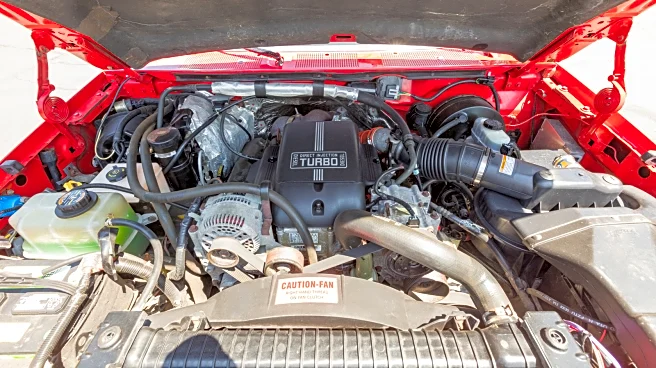When it comes to Ford, two things are usually a given. The first is the impressive list of vehicles in the manufacturer's catalog, from the beloved and smooth F-150, to high-performance cars like the Ford GT and Mustang Shelby GT500.
Second is the company's penchant for being a trendsetter. Ford has numerous achievements to its name, including the implementation of the moving assembly line, which significantly improved the overall manufacturing process in terms of cost and efficiency.
For all it's
known for, not many will tell you that Ford also built one of the most iconic engines of the 20th century, the GAA V8. At first glance, you'd be forgiven for thinking this is one of Ford's conventional engines, like the long-lasting 6.7-liter Power Stroke: Good, reliable, and under the hood of some of its best vehicles. While the engine was indeed good and reliable, it is its application and adaptability that truly set it apart from most other engines the automaker has ever produced.
You see, while engines like the Power Stroke have been used to power trucks, vans, and SUVs, the GAA V8 unique was mostly used to power World War II military tanks, specifically the M4 Sherman tank.
Even more interesting was that it was first designed for aviation purposes, which might explain its initial massive 27-litre size and 12 cylinders. In its military days, it boasted 525 gross horsepower, and 1,050 pound-feet of torqueat low rpms. The engine also saw extensive outside of the M4 Sherman, thanks to its power and reliability.
Read more: 10 Airplanes That Managed To Fly With Staggeringly Low Horsepower
The GAA Started Out As A 1,800 Horsepower Aircraft Engine
When Ford first designed the GAA V8, it was conceived as an airplane engine. Back then, the engine came with more cylinders and a higher displacement, all of which had to be dialled back when its application changed. Ford chopped four cylinders off the engine, and one third of the capacity was also gone. Even so, the engine was still pretty sizable. In fact, it's still among the biggest engines Ford has ever produced.
The new engine featured eight cylinders and was an 18-liter behemoth, with the obscene horsepower and torque to match. In its aviation variant, it could produce between 1,800 and 2,220 horsepower. Ford had hoped it would make its mark in the aircraft industry against Rolls-Royce's Merlin engine. However, fate seemed to have different plans, as the engine, at least the 18-liter version, ended up in the U.S. Army during World War II, powering medium-sized Sherman tanks instead.
From The Military To Drag Races And Tractor Pulling Showdowns
You could argue that the GAA V8 fell short of glory when it didn't make the aviation cut, but you'd be wrong, because it shone brightly in its military years. Its architecture mirrored that of its V12 variant in many ways, which simplified the production process, allowing for more engines to be produced for the war effort without additional hassle.
Thanks to its aluminum build, it was also quite lightweight compared to other engines, which helped reduce the overall weight of the tanks in which it was installed. Add to the fact that it produced over 1,000 lb-ft at as low as 2,200 rpm, and you can see why it quickly became the perfect engine for the Sherman.
With the end of the war, the engine ultimately fell into civilian hands. You can already guess how that went. Gifted hands and minds quickly discovered that tinkering with it pushed even more power out of the engine, with some reaching the 5,000 horsepower mark. Its low sustained rpm made it serve as well in civilian applications as it had in its military days. Today, the engine sees use in drag races and tractor pulling showdowns, which speaks to its remarkable adaptability.
Want the latest in tech and auto trends? Subscribe to our free newsletter for the latest headlines, expert guides, and how-to tips, one email at a time.
Read the original article on SlashGear.












